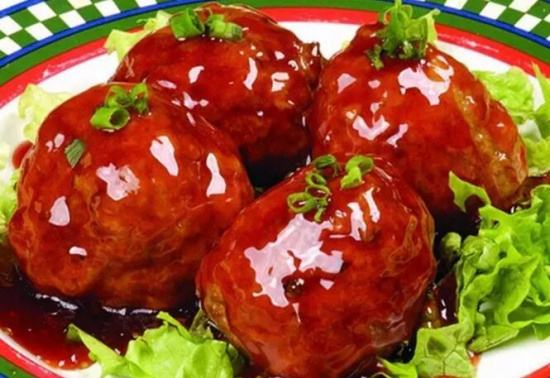Lu Cuisine, also called Shandong Cuisine, is originated from the native cooking styles of the State Qi and State Lu of the Spring and Autumn Period and Warring State Period (770 B.C. – 221 B.C.). Developed through the Qin and Han Dynasties (221 B.C.-220 A.D. ), it has become the representative of the Northern Food since Song Dynasty (960 A.D. – 1279 A.D.).It is the most prevalent distinct regional cuisine in China, popular throughout Beijing, Tianjin, all over North and Northeast China. Most people agree that Lu Cuisine ranks the first among the eight regional cuisines.
鲁菜即山东风味菜,发源于春秋战国时期的齐国和鲁国,形成于秦汉,宋代后成为“北食”的代表,是中国覆盖面最广的地方风味菜系,遍及京津、华北、东北等地。绝大多数人都认为,鲁菜是中国八大菜系之首。
Sub-Styles 流派
Lu Cuisine consists of three major styles, namely, the coastal Jiao dong style(mainly seafood) , the inland Jinan style, and the self-contained style of Confucian Residence Cuisine.The Jiao dong style favors prawns, conch , abalone, oyster, kelp and other seafood as the raw materials and employs quick frying, grilleding deep frying, steaming, liu(frying and braising lightly) and other cooking methods.It tastes fresh and light. Jinan style is known for the soup.Cooked with the quick-frying, braising, deep- frying and pan-frying techniques, the dishes taste light, fresh, crisp and tender. Well-known dishes include Qing tang Shi jin(Assorted Vegetable Soup) and Typha Latifolia Vegetable Milky Broth, whichare fresh andtasty.Confucian Residence Cuisine is deluxe delicacy blending in different styles and featuring in rare ingredients.In ancient times, the Confucian Residence Feast could further divide into different levels like Bird’s Nest Feast, Four Shark Fin Dishes and Three Sea Cucumber Dishes.
鲁菜由沿海的胶东菜(以海鲜 为主)、内陆的济南菜、自成体系 的孔府菜三大风味流派组成。胶东 菜选料则多为明虾、海螺、鲍鱼、 蛎黄、海带等海鲜,擅长爆、炸、扒、熘、蒸等烹调方式,口味以鲜 夺人,偏于清淡。济南派则以汤著 称,辅以爆、炒、烧、炸,菜肴以 清、鲜、脆、嫩见长。其中名肴有 清汤什锦、奶汤蒲菜,清鲜淡雅, 别具一格。孔府菜融汇百家之长, 规格较高,菜品奢华,古时“孔府 宴”有“燕菜全席”“鱼翅四大 件”和“海参三大件”等不同级别 的宴席。
Features 特色
Lu Cuisine tends to be salt flavored, fresh, tender, savory and crispy. The chefs are good at applying shallots, garlic and ginger to add the flavor in whatever cooking techniques used, being it quick frying. braising. dressing or marinating. As Shandong is the major producer of scallion, it is widely used in dishes like Congshao Haishen (Braised Sea Cucumber with Scallion) and Congshao Tijin (Braised Tendons with Scallion), all featured with strong scallion flavor.
鲁菜调味纯正,口味以鲜成为主,具有鲜、嫩、香、脆的特色。 擅长使用葱、姜、蒜,不管爆、 炒、熘、烩、烧,还是凉拌,都少不了用葱姜蒜来提味。尤其是葱,因山东盛产大葱,很多菜肴都离不开葱,如葱烧海参、葱烧蹄筋,都以拥有浓郁的葱香为佳。
Lu Cuisine is unique in its way of cooking seafood. With numerous cutting and cooking techniques. it can turn one kind of seafood into a dozen of delicious dishes. Take, for example, Quick-fried Kidney and Squid, Red Cooked Conch, and Fried Oyster, they are all special delicacy.
此外,鲁菜烹制海鲜有独到之处,能运用多种刀工和不同技法, 将一种海味烹制成数十道美味佳肴。以小海鲜烹制的油爆双花、红烧海螺、炸蛎黄等,都是独具特色的海鲜珍品。
Lu Cuisine is particular about making soup, good at making consomme and milky broth and applying them in all kinds of dishes, such as Sea Cucumber in Consomme and “Family Fortune Delight” in Broth. which are all delicacy in high-ranked feasts.
鲁菜制汤也非常讲究,擅长“清汤”“奶汤”的调制,并运用到多种菜品中,如清汤柳叶燕窝、 清汤全家福等,都是高档宴席中的珍馐美味。
Representative Dishes 代表菜品
Guota Huangyu (Collapsed Yellow Croaker) 锅塌黄鱼
Made with fresh fish. According to Jegend. in the Ming Dynasty (1368-1644), a clever woman cook put half-fried yellow croakers into the pot with onions. ginger, garlic, star anise and broth, and simmered until the sauce is thickened. It turned out that the result tasted much better than the original fried fish. When the crispy fried food is steamed and gets softened, Jiaodong people call it ta (collapsed). Thus, the dish got the name Guota Huangyu (Collapsed Yellow Croaker).
用新鲜黄鱼制作。相传明代时一个聪明的厨娘将半熟的油炸黄鱼放入加了葱、姜、蒜、八角和清汤的锅里煨至汁尽,结果味道大大胜过原本的油炸黄鱼。胶东人把酥脆食品入锅煎蒸回软叫做“塌”,因此这道菜得名“锅塌黄鱼”。
Braised Pork Balls in Gravy Sauce 四喜丸子

Braised Pork Balls in Gravy Sauce, also known as the Big Meatballs and Siri YuanZi, refers to four large deep- fried and steamed meatballs covered with sauce. According to legend, it got the name from Zhang Jiuling, a statesman in the Tang Dynasty (618-907) to celebrate four joyful matters-his success in the imperial examination, being courted as the husband of the princess, getting married and starting a family, and reunioned with the big family. In northern China. Braised Pork Balls in Gravy Sauceis a must in the wedding ceremony, or thecelebration of the birthday of the elderly, symbolizing happiness and family reunion.
四喜丸子又称“大肉圆…四喜圆子”,就是四个炸透蒸熟并浇以汤汁的大肉丸子。相传始创于唐朝,因张九龄庆贺自己高中科举、 酸招为驸马、成家完婚、合家团圆之“四喜”而得名。四喜丸于是中国北方每逢婚庆、寿宴必上的菜肴,有喜庆团圆的美好寓意。
